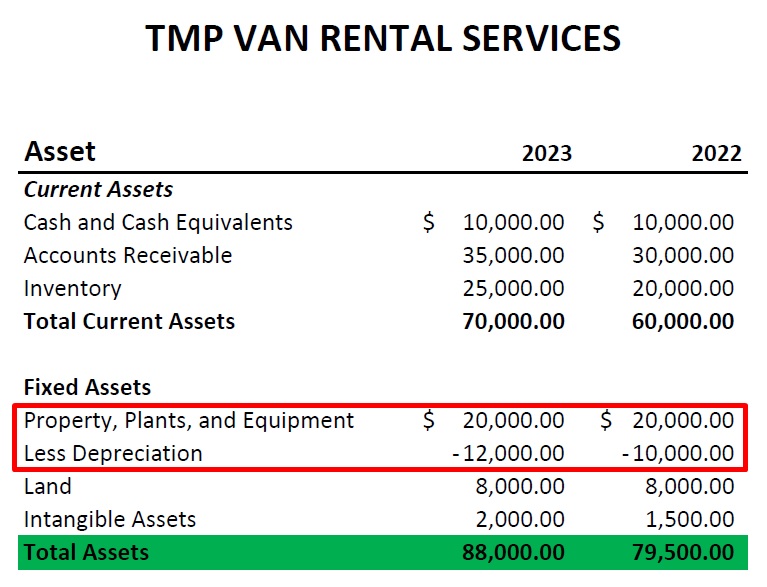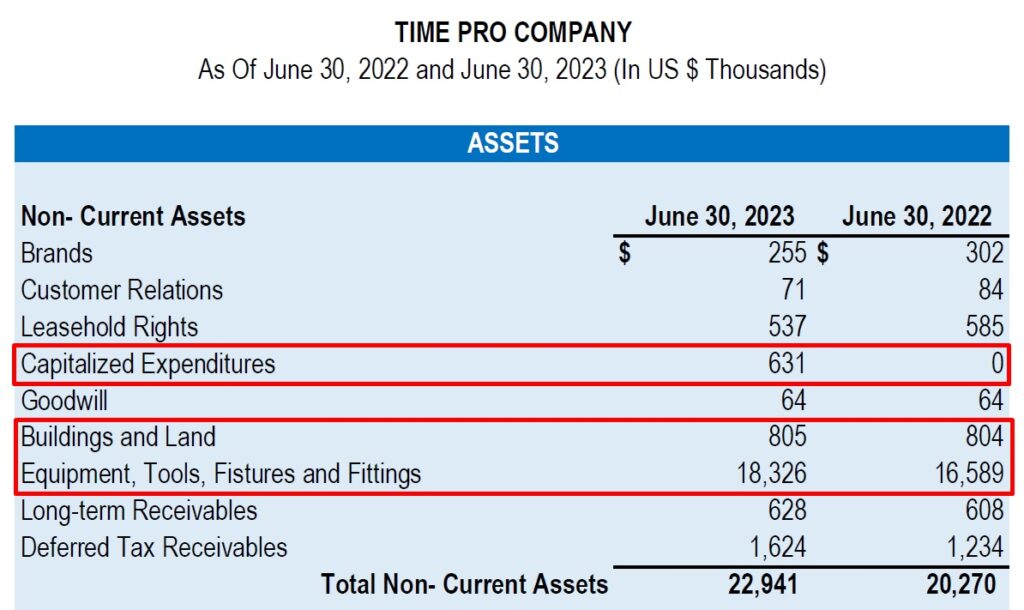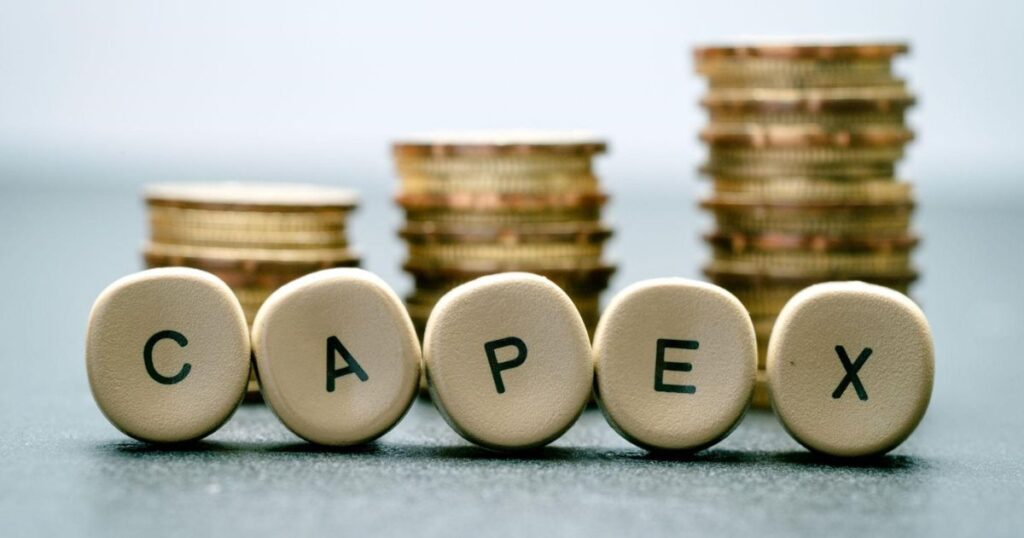Ever wondered how companies expand, upgrade, or embrace new technologies?
The answer lies in CapEx or Capital Expenditures. It’s the financial engine that drives the acquisition, enhancement, and upkeep of vital physical assets crucial for business growth. Whether creating factories or obtaining new equipment, CapEx is at the core of it all.
Companies often utilize CapEx for fresh ventures or investments. This involves spending on fixed assets like roof repairs, equipment purchases, or factory construction.
Such financial outlays are aimed at broadening their operations or securing future economic advantages.
Decoding CapEx
CapEx reflects a company’s commitment to sustaining or expanding its business through both existing and new fixed assets. These costs are recorded on the balance sheet as investments rather than regular expenses on the income statement. The expenses incurred are distributed over the useful life of the asset.
Industries such as oil exploration, telecommunications, manufacturing, and utilities typically exhibit high levels of CapEx due to the nature of their operations.
You can locate CapEx in a company’s cash flow statement under investing activities. It’s worth noting that different companies may refer to CapEx differently, such as capital spending or property, plant, and equipment (PP&E) purchases.
Calculating CapEx involves comparing the depreciation expense on the income statement with the change in Property, Plant, and Equipment (PP&E) balance on the balance sheet. Adding the change in PP&E to the depreciation expense provides insight into current CapEx spending.

*Example of CapEx on PPE with Depreciation for TMP Van Rental Services for 2022 and 2023.
Where CapEx Typically Applies
The following categories represent the primary areas where companies allocate capital for long-term growth, efficiency improvements, and competitive advantage.
Investments in Property, Plant, and Equipment (PP&E)
This category includes purchases of physical assets such as land, buildings, machinery, and equipment that are essential for business operations.

*Example of CapEx on PPE for Time Pro Company for June 30, 2022, and June 30, 2023.
Research and Development (R&D)
Expenditures related to R&D activities aimed at developing new products, processes, or services. This can include costs associated with salaries, equipment, and materials used in research projects.
Information Technology (IT) Infrastructure
Investments in IT infrastructure cover hardware, software, and networks necessary for maintaining and improving technology capabilities within an organization. This can include upgrades to servers, networking equipment, software licenses, and cybersecurity measures.
Expansion and Growth Initiatives
Capital expenditures to support business expansion, such as opening new facilities, entering new markets, or launching new product lines. This can involve costs related to construction, marketing, and initial staffing.
Acquisitions and Mergers
Capital is spent on acquiring other companies or merging with existing ones. This can involve purchasing the equity or assets of another business, which may include payments for goodwill, intellectual property, or customer bases.
Formula and Calculation for CapEx
The CapEx formula can be computed in two ways: Direct and Indirect Method.
Direct Method involves straightforwardly summing up all business transactions related to fixed assets, such as properties or equipment. Often, this calculation is automated through the company’s Enterprise Resource Planning (ERP ) software.
Expenses on Asset 1
Plus: Expenses on Asset 2
Plus: Expenses on Asset 3
Less: Proceeds from the sale of assets
= Net CapEx
Alternatively, when CapEx isn’t explicitly presented in the cash flow statement, analysts resort to the Indirect Method. In this approach, capital expenditures are derived by adding depreciation to the alteration in fixed assets. Including depreciation is crucial as it accounts for the decline in the value of fixed assets over time.
PP&E Balance in the current period
Less: PP&E balance in the previous period
Plus: Depreciation in the current period
= Net CapEx
Capital Expenditures can be usually computed as follows:
CapEx = ΔPP&E + Current Depreciation
(ΔPP&E = Change in property, plant, and equipment)
Capital expenditures are a key component in determining free cash flow to equity (FCFE), which represents the cash accessible to equity shareholders. FCFE is calculated using a specific formula:
Sample Calculation
Let’s consider a scenario to illustrate the importance of considering depreciation in CapEx calculations:
Imagine a real estate development firm with existing properties valued at $10 million on their balance sheet. Throughout the fiscal year, they decide to invest in improving one of their properties, a commercial building, by renovating its interior spaces and upgrading its infrastructure. The total cost of these renovations amounts to $2 million.
However, it’s crucial to account for depreciation, especially in the real estate sector where properties tend to depreciate over time. In this case, the renovations are expected to extend the property’s useful life by several years, but they will still undergo some depreciation.
Upon careful assessment, it’s determined that the renovations will depreciate by $400,000 over the year due to wear and tear, market fluctuations, and other factors. Therefore, the true capital expenses associated with the renovations stand at $2.4 million ($2 million initial cost plus $400,000 depreciation).
Neglecting to factor in depreciation could lead stakeholders to overestimate the company’s total asset value, potentially misleading investment decisions and financial planning. For instance, without considering depreciation, one might mistakenly believe the firm’s total property value has increased to $12 million, leading to an inaccurate assessment of CapEx.
Conversely, if CapEx falls short of depreciation, it may signal a slowdown in investment or asset deterioration, indicating a decline in the business. Hence, understanding and accurately accounting for depreciation within CapEx calculations is essential for informed decision-making and financial analysis in the real estate industry.
CapEx Best Practices
Large-scale capital projects with substantial expenditures can quickly spiral out of control if mismanaged, leading to significant financial burdens for organizations. Nevertheless, with meticulous planning, appropriate tools, and adept project management, this scenario can be averted. Discover the key strategies that guarantee efficient budgeting of capital expenditures.
1. Establishing a Strong Foundation
Before diving into capital expenditure budgets, thorough groundwork is key to prevent budget overruns. Before project kickoff, defining the project scope, setting realistic deadlines, and obtaining thorough plan approval are crucial steps.
At this juncture, consideration should be given to the necessary internal resources for the project, encompassing manpower, materials, finances, and services. Delving deeper into project specifics leads to a more precise budget.
2. Embrace a Long-Term Perspective
At the project’s outset, the decision to procure the capital asset through debt or reserved funds is pivotal. Saving up for the purchase entails a waiting period while borrowing incurs debt and potential future borrowing constraints. Each approach has merits, with suitability varying by project.
3. Harness Effective Budgeting Tools
Selecting a dependable, user-friendly software tool for budget management from project initiation is paramount. The choice of budgeting software hinges on project scale, program efficiency, and error risk.
4. Ensuring Data Accuracy
Accurate data is the linchpin for efficient capital project management. Reliable information gathering is imperative for constructing a realistic budget and generating insightful reports.
5. Striking the Right Detail Balance
Balancing detail levels is crucial; excessive detail prolongs budget preparation, potentially rendering it obsolete, while insufficient detail yields a vague and less useful budget. Finding the optimal level is essential.
6. Establishing Transparent Guidelines
Given the involvement of multiple employees, departments, or regions in capital expenditure management within extensive organizations, clear-cut policies are indispensable to steer the budget on course.
Final Thoughts
CapEx is the money companies use to buy, upgrade, or keep important things like buildings and equipment. It’s like the fuel that helps businesses grow and improve.
Whether it’s building new factories or buying better machines, CapEx is what keeps things moving forward. Understanding CapEx helps us see how companies invest in their future and whether they’re getting bigger or smaller.





